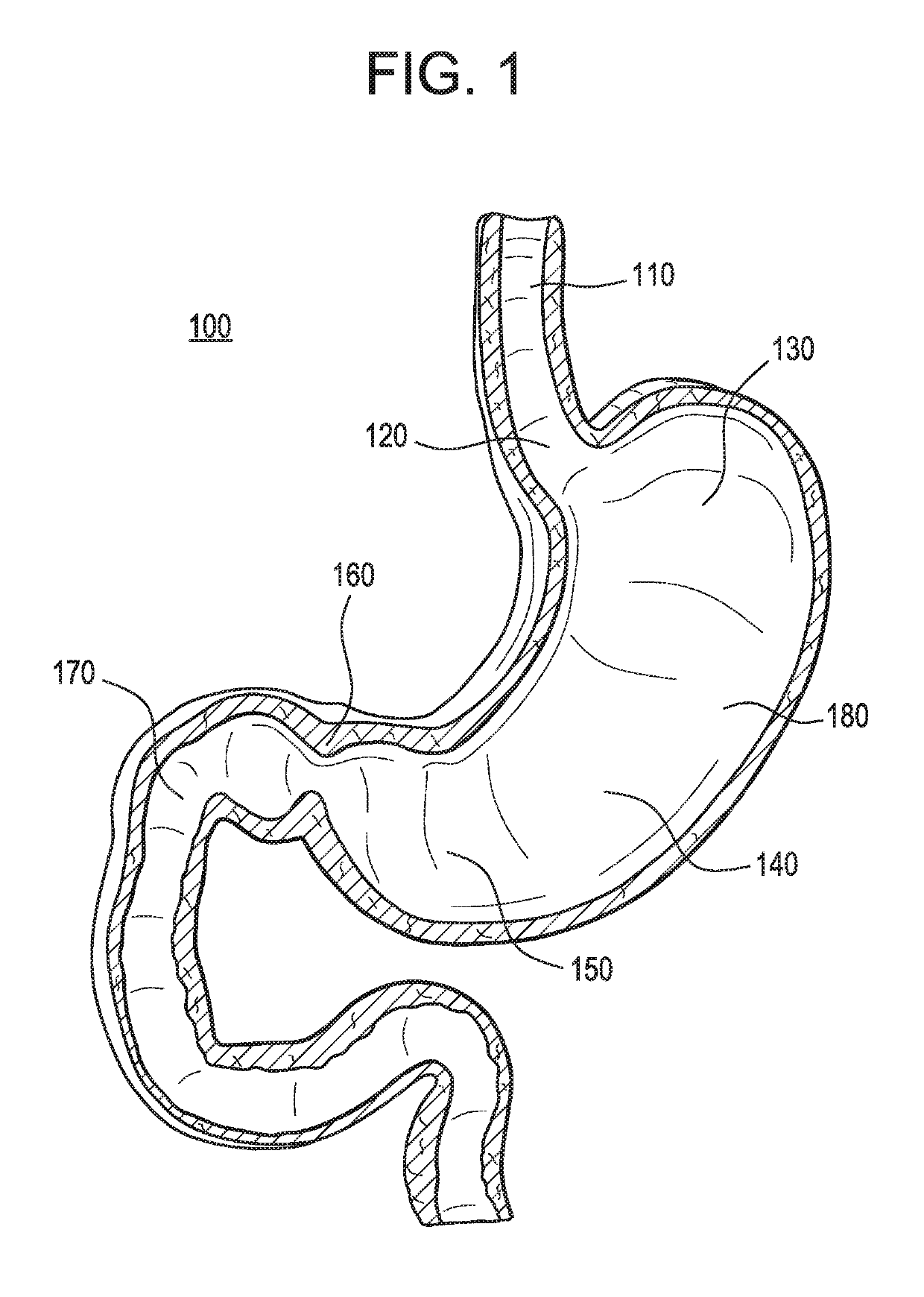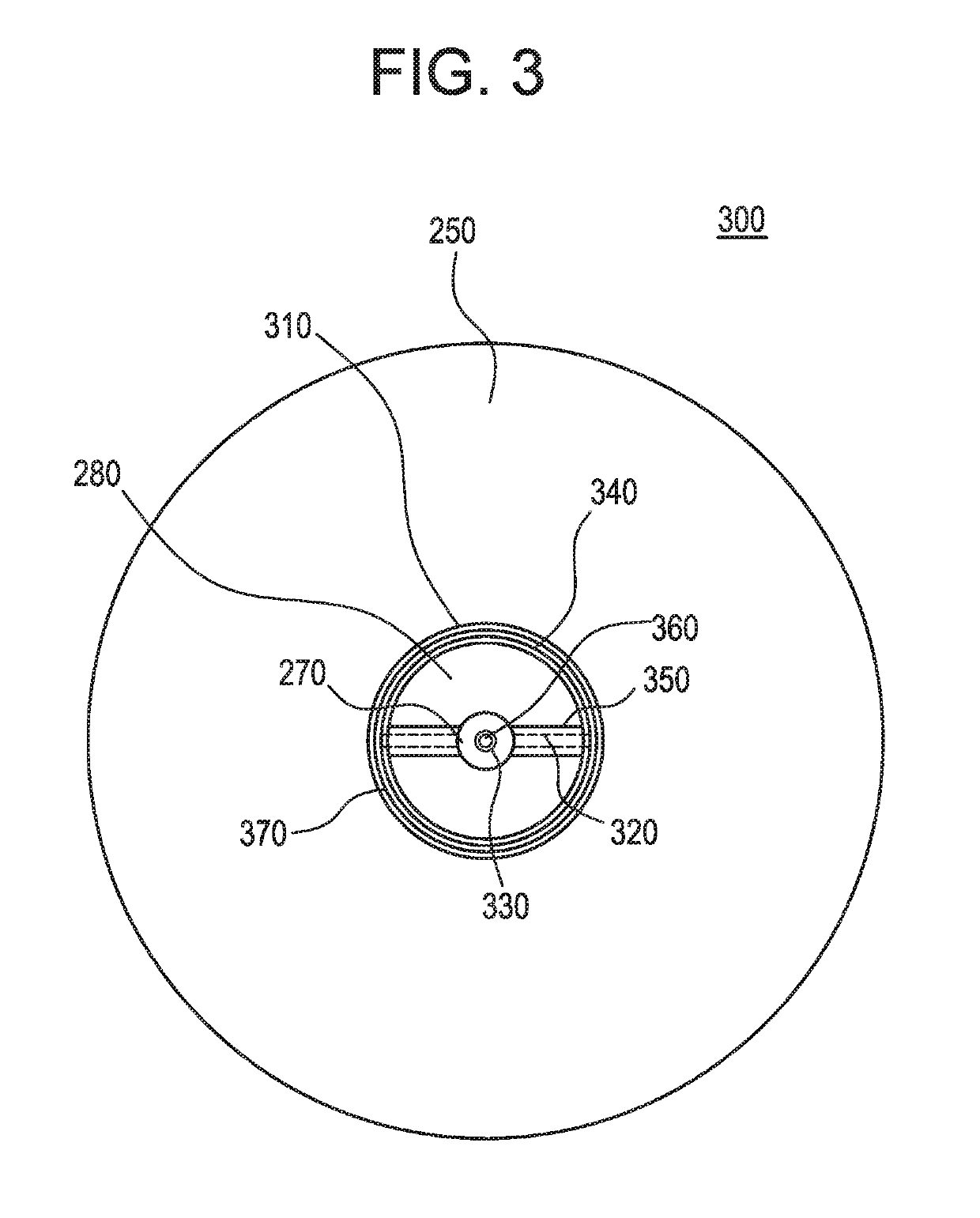Passive caloric bypass device
a caloric bypass and bypass device technology, applied in the field of medical devices, can solve the problems of not being able to achieve sustained reduction, no single approach to help prevent or treat overweight and obesity, and reducing the size of the stomach
- Summary
- Abstract
- Description
- Claims
- Application Information
AI Technical Summary
Benefits of technology
Problems solved by technology
Method used
Image
Examples
Embodiment Construction
[0056]Referring to FIG. 1, the upper middle portion of the human gastrointestinal tract 100 is illustrated. The esophagus 110 leads to the lower esophageal sphincter 120. The lower esophageal sphincter 120 is located at the entry point into the stomach 180 and serves to admit ingested particles of food (not shown) into the stomach 180 and to subsequently form a seal, when constricted, to prevent the regurgitation of food particles and digestive fluids into the esophagus 110 during the muscular contractions associated with the digestive process. The ingested food enters the stomach 180 near the Fundus 130 and is subjected to the digestive secretions of the stomach lining. As the digestive contractions of the Fundus 130 occur, the food passes towards the Antrum 140 and ultimately passes into the Pylorus 150 of the stomach 180 where it is subjected to strong contractions and the liquefied portion of the semi-digested material, or chyme, is passed into the Duodenum 170 through the dilat...
PUM
 Login to View More
Login to View More Abstract
Description
Claims
Application Information
 Login to View More
Login to View More - R&D
- Intellectual Property
- Life Sciences
- Materials
- Tech Scout
- Unparalleled Data Quality
- Higher Quality Content
- 60% Fewer Hallucinations
Browse by: Latest US Patents, China's latest patents, Technical Efficacy Thesaurus, Application Domain, Technology Topic, Popular Technical Reports.
© 2025 PatSnap. All rights reserved.Legal|Privacy policy|Modern Slavery Act Transparency Statement|Sitemap|About US| Contact US: help@patsnap.com



